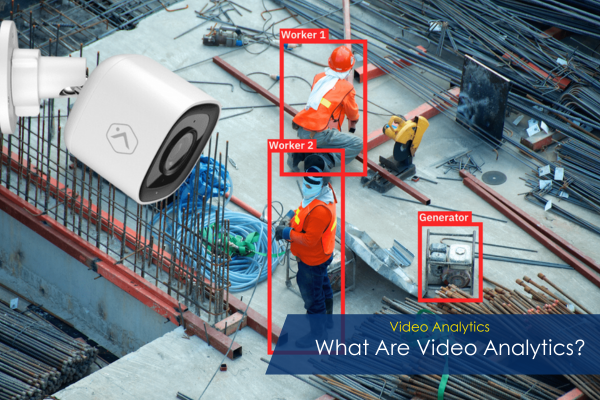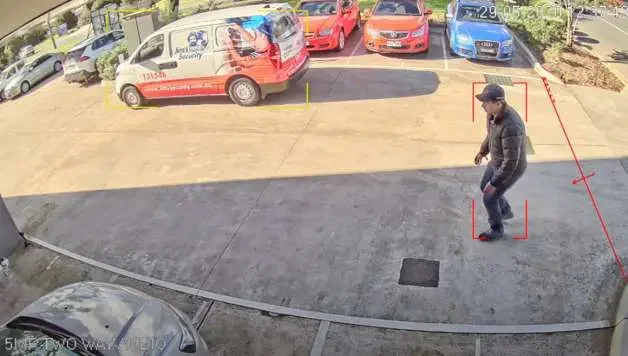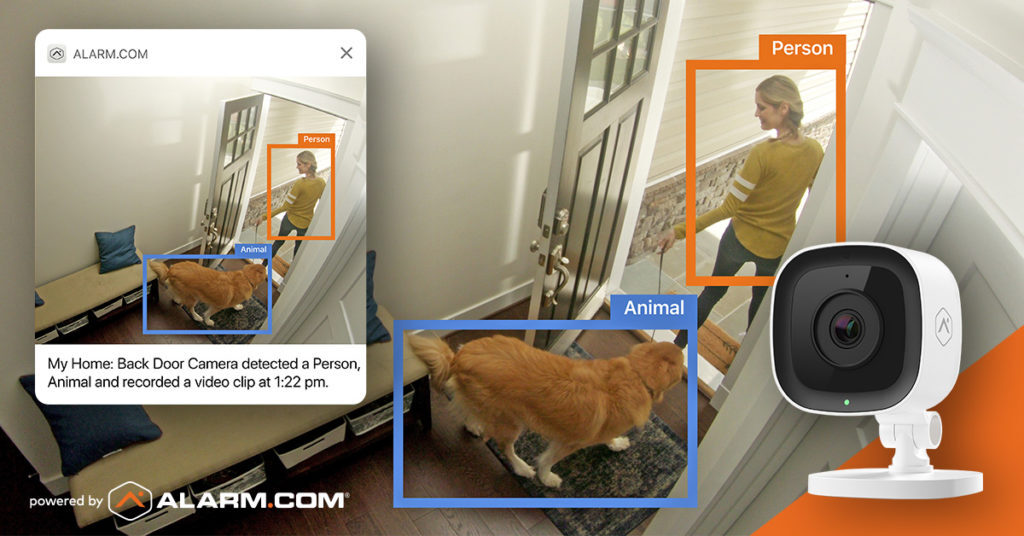
What Are Video Analytics?
Video analytics refers to the process of using algorithms and artificial intelligence (AI) to automatically analyze video footage for specific data or patterns. It allows for the real-time monitoring and analysis of video streams to extract meaningful insights or trigger actions based on detected events.
Ground Zones and Tripwire
Video Analytics allows you to create a tripwire or ground zone alerts. When people cross the virtual threshold you placed on your property, you will be alerted through an app. This also triggers the camera to record the event.
A tripwire is a simple virtual line that is great for pathways like driveways, sidewalks, or gates. A ground zone is a virtual perimeter that is best for areas like porches, pools, or backyards.
When you use this feature, you eliminate unnecessary notifications to your phone. Suppose a car is driving by your house but not into your driveway. In that case, you won’t be alerted about that motion detection, even though it is caught on your camera.


Types of Distinction in Video Analytics
In video analytics, distinction refers to the ability of the system to differentiate between various elements in the video feed, such as objects, people, vehicles, or specific events, and to categorize or prioritize them for specific analysis or actions. This distinction is achieved using advanced algorithms, AI, and machine learning techniques, which allow for the accurate identification and classification of different entities in a video.
- Object Distinction
The system can distinguish between different objects, such as people, animals, or vehicles. This allows the software to apply different rules or actions depending on the object it detects. For example, it can differentiate between a car and a person in a parking lot, applying specific tracking or alerts accordingly. - Facial vs. Object Recognition
Distinguishing between faces and other objects is essential in systems that use facial recognition for security or attendance purposes. This allows the software to focus on identifying individuals versus detecting vehicles, animals, or other items. - Motion Distinction
The ability to differentiate types of motion, such as a passing car versus a person running, or even distinguishing between natural environmental motion (e.g., wind blowing leaves) and human or vehicle movement. This helps in reducing false alarms in surveillance systems. - Environmental Distinction
Video analytics systems can distinguish between environmental factors, such as day vs. night, weather changes, or lighting conditions. This allows the software to adjust its detection and analysis based on the environment, improving accuracy in various conditions.

Custom Scheduling
Custom scheduling in video analytics refers to the ability to configure specific time frames during which video analysis or monitoring is active or inactive. This feature allows users to tailor video analytics systems to their unique needs, ensuring that the system operates only during relevant periods or with varying levels of sensitivity based on the time of day, day of the week, or particular events.
Example case: A retail store may configure its video analytics to monitor customer behavior during store hours (e.g., for heat mapping or customer flow analysis) and switch to high-sensitivity monitoring after hours for intrusion detection. The system would only trigger security alerts when it detects movement after closing time, reducing unnecessary notifications during business operations.
Custom scheduling allows businesses to get the most out of their video analytics by adjusting system activity based on their unique security or operational needs.




Recent Comments